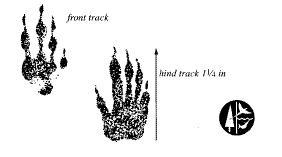Nebraska Game and Parks Commission

Nebraska Game and Parks Commission: Publications
Document Type
Article
Date of this Version
2022
Citation
LaGrange, T. 2022. Guide to Nebraska's Wetlands and their Conservation Needs. 3rd ed. The Nebraska Game and Parks Commission, Lincoln, NE.
Abstract
Wetlands: a source of great interest, and at times conflict. Wetlands represent different things to different people. To some people they may be considered shallow, muddy nuisances whereas to others they are considered to be wonderful, varied, and productive assets. This is because wetlands take on many roles as part of an elaborate and dynamic system. Understanding wetlands requires understanding the complex and varying roles they can play. To aid in this understanding, this guide defines wetlands, discusses their importance and dynamics, identifies threats and losses, describes conservation programs, and takes an in-depth look at Nebraska’s regional wetland complexes.
Nebraska’s wetland resources are surprisingly diverse and dynamic. They include marshes, lake edges, river and stream edges, backwaters, oxbows, wet meadows, fens, forested floodplains, and seep areas. These wetlands vary greatly in nature and appearance due to physical features, such as geographic location, water source and permanence, and chemical properties. Some wetlands hold water for only a few weeks or less during the spring, whereas others rarely go completely dry. Many wetlands receive their water from groundwater aquifers, and others are totally dependent on precipitation and runoff. Finally, the water chemistry of wetlands ranges from fresh to saline, and from acidic to basic. These descriptions identify the extremes of wetland characteristics. Nebraska’s wetland resources possess these extremes and virtually every combination in between.
Included in
Biodiversity Commons, Natural Resource Economics Commons, Natural Resources Management and Policy Commons, Population Biology Commons, Terrestrial and Aquatic Ecology Commons, Zoology Commons


Comments
(c) Nebraska Game and Parks Commission, 2022